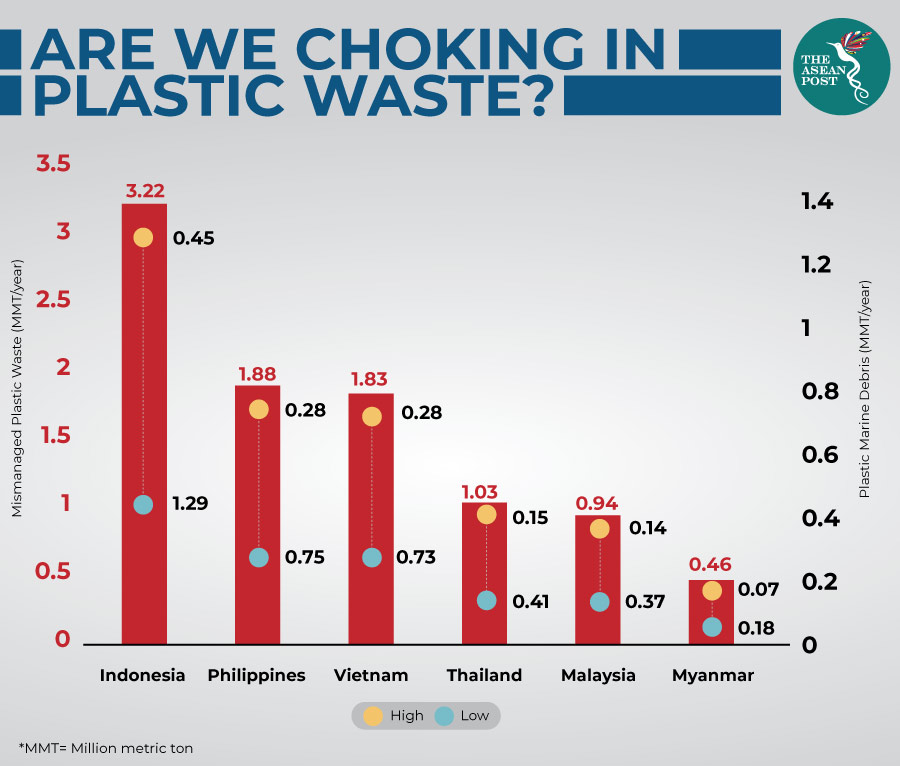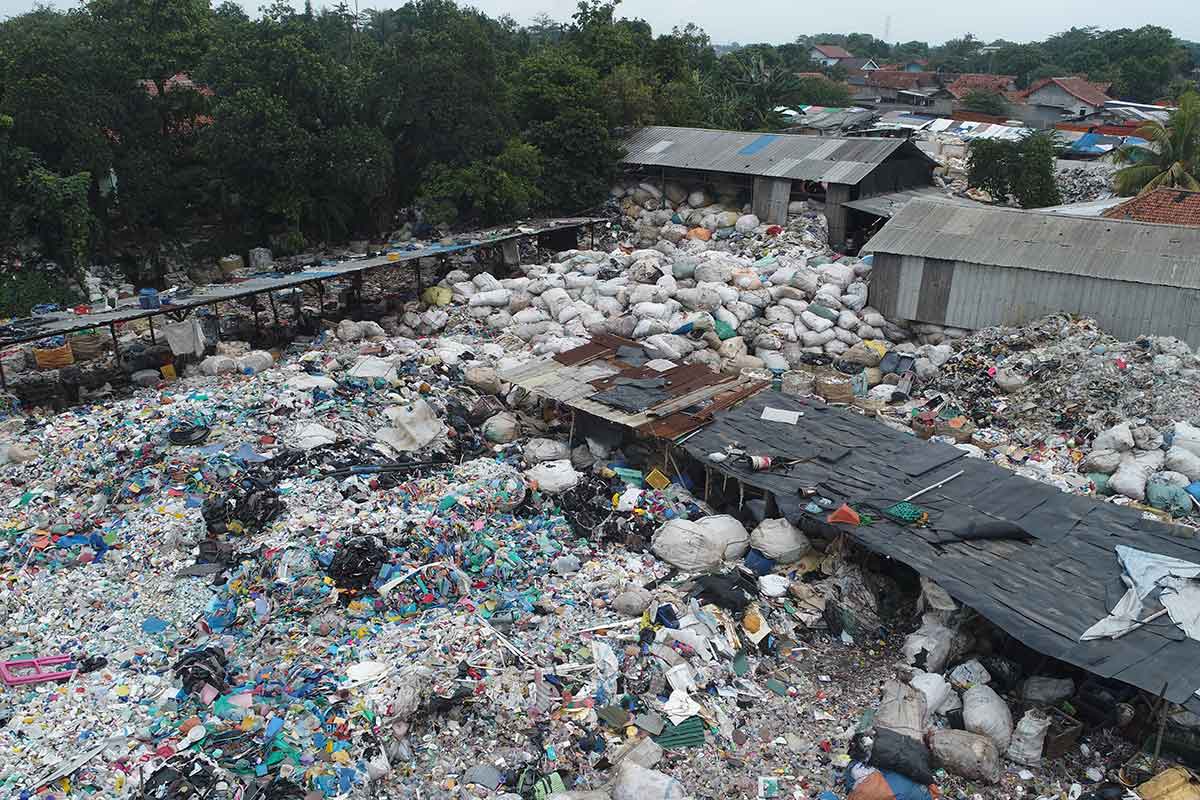Southeast Asians are drowning in plastic. In the global list of top 10 countries ranked by mass of mismanaged plastic waste or waste that is either littered or inadequately disposed in dumps or open landfills, Southeast Asia fielded five name - Indonesia, the Philippines, Vietnam, Thailand and Malaysia. Collectively, the five countries contribute 8.9 million metric tons of mismanaged plastic waste annually.
At the top of the list is Indonesia, responsible for 3.22 million metric tons (MMT) of mismanaged waste every year, second only behind China who contributes 8.82 MMT mismanaged waste per year in the pile. According to the Indonesian Ministry of Environment and Forestry, the country went through 9.8 billion plastic bags in 2016 alone, much of it are used only once.
From the land to the sea
In the archipelagic country with more water than land, the problem is compounded by a distinct insufficiency in waste management policy and practice. Every year, it is estimated that up to 1.29 MMT of Indonesia’s mismanaged plastic ends up in the sea. The impact of Indonesia’s plastic problem goes beyond environmental and is becoming a major threat to its economy.
In the megacity of Jakarta, home to 13.5 million people, decades of insufficient systems for and public apathy towards waste management are key reasons for the shocking rate of land subsidence. In North Jakarta where much of Indonesia’s economic activities are located, land subsidence has passed 2.5 metres in 10 years, with some areas sinking as much as four metres.
In 2017, the tropical paradise Bali had a “garbage emergency” after the country's most popular tourist beaches were flooded with plastic waste, leading to authorities declaring a six kilometre stretch on the western coast of Bali an emergency zone.

Focus on the plastic
To reduce plastic consumption, the government there kicked off a pilot program in 2016 to charge an IDR200 (US$0.01) levy on plastic shopping bags in 23 cities, leading to a reduction of 55 percent waste and 40 percent plastic refusal by shoppers in Jakarta. However, participating retailers refused to continue the program beyond the trial period on the basis that charging customers for bags had no legal basis. Indonesia also failed its excise on plastic bags that was supposed to come into effect in July 2018, due to strong opposition from plastics manufacturers and the Ministry of Industry.
However, the Indonesian government is pressing forward, pledging to dramatically reduce 70 percent of its marine waste by 2025, along with up to US$1 billion annually to fund the actions required to achieve this target.
It is now set to give more responsibilities to the manufacturing industry, fast moving consumer goods (FMCG) and retailers in reducing plastic waste from their products and services through product packaging redesign, use of recyclable materials, and waste management. According to the Environmental Ministry’s Head of Waste Management, Rosa Vivien Ratnawati, the regulation applying the Extended Producer Responsibility (EPR) concept is expected to be ready by end of the year in the form of a ministerial decree.
System-wide improvements
Indonesia’s persistence in handling its plastic waste problem is expected to address the much wider issue at hand - waste management. World Economic Forum’s (WEF) Head of Circular Economy Initiative Antonia Gawel, said that Indonesia should take advantage of the momentum from its plastic waste reduction movement to relook its system-wide waste management.
WEF is hosting the newly launched Global Plastic Action Partnership (GPAP) aimed at bringing together businesses, donors, national and local government, experts and communities to collaborate on beating plastic pollution. Indonesia is GPAP’s first collaboration.
According to Gawel, in addressing the drivers of the Indonesian waste problem, much of which is due to single use packaging and the increasing availability and acceptability of the materials used in the market, the Indonesian government will have to also look at the solution from an infrastructural perspective.
“Once you start to question what is going into the landfill and if we should divert different materials for different purposes, we will start to look at the whole system. You start to look at the opportunities to gain and how to better manage all parts of waste, not just plastic. You will see a trickle on effect,” explained Gawel.
Public awareness and understanding of the plastic problem are also growing parallel to government efforts. The National Trash Awareness Day or Hari Peduli Sampah in February brought about a series of clean-up initiatives throughout the country, ranging from small community-based activities to massive undertakings involving the army, mobilising thousands of people. Now, it’s the private sector’s turn to buck up.
Related articles:
